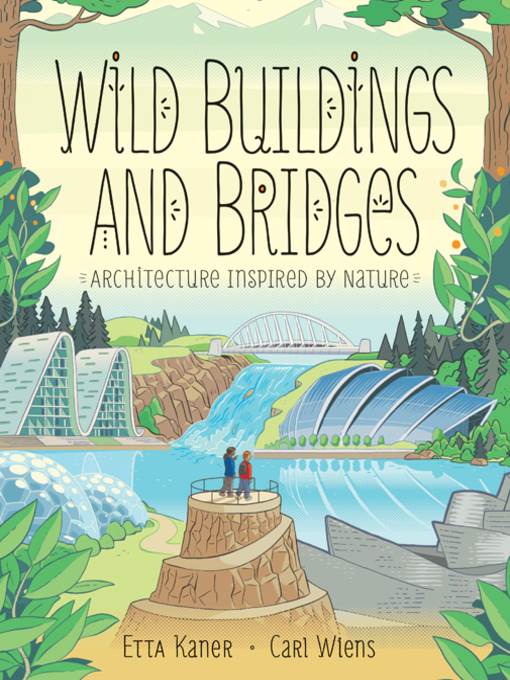
Wild Buildings and Bridges
Architecture Inspired by Nature
فرمت کتاب
ebook
تاریخ انتشار
2018
Lexile Score
1050
Reading Level
5
ATOS
6.7
Interest Level
4-8(MG)
نویسنده
Carl Wiensناشر
Kids Can Pressشابک
9781525301599
کتاب های مرتبط
- اطلاعات
- نقد و بررسی
- دیدگاه کاربران
نقد و بررسی

July 15, 2018
A world-spanning look at connections between structures and patterns in nature and those designed by modern architects.Kaner introduces some prominent figures--among them "aquatect" Koen Olthius, Frank Gehry, and the granddaddy of "organic" architecture, Frank Lloyd Wright--as she leads readers past houses that float or rotate, a truss bridge in Japan and an earthquake-resistant one in Greece, some buildings made from tires or other recycled materials, others that collect rainwater or shed excess heat, Norman Foster's London "Gherkin" (which was inspired by a type of sea sponge), and other examples of architectural biomimesis. In keeping with the premise, Wiens mixes schematic views of foundations and gracefully curving roofs or other structures with close-ups of roots, flowers, the trusses that lighten and strengthen a vulture's metacarpal bones, hexagons in a beehive, and fractal patterns in leaves and in stone walls. A pair of simple hands-on projects demonstrate design principles, and a set of images of flora and fauna followed by a spread of actual buildings that resemble them offer a final invitation to budding designers to get going. Tiny human figures in a few of the painted illustrations display a range of skin tones.An eye-opening survey for makers and observers alike. (index, resource list) (Informational picture book. 7-10)
COPYRIGHT(2018) Kirkus Reviews, ALL RIGHTS RESERVED.

October 1, 2018
Gr 3-7-An informational picture book that will fit perfectly into STEM units on nature and sustainability. Kaner provides a global examination of the ways that architects have learned from, and been inspired by, nature. Each example uses a combination of drawings and photographs of the building or bridge, along with detailed cross-sections to accompany the technical details in the text that explain the rules of nature applied by the architect. Kaner includes biographical information about the architects behind these masterpieces, with in-depth "Meet the Architect" insets on figures like Koen Olthuis and Frank Gehry. The book also considers the topics of recycling, energy efficiency, fractals and truss patterns as applied in engineering, and architectural design. There are a number of simple, fun activities that give children (and teachers) a hands-on way to better understand the concepts presented in the book. The work concludes with a design challenge that asks readers to get creative and construct their own structure using inspiration from a lotus flower, armadillo, jellyfish, and other elements of the natural world, followed by a spread of drawings and descriptions of actual buildings. This section, along with a number of other features, would undoubtedly inspire further research, career explorations, and many creative ideas. VERDICT An essential STEM addition that will inspire the curiosity of budding architects and also provide a wealth of extended activities for educators.-Theresa Muraski, University of Wisconsin-Stevens Point Library
Copyright 2018 School Library Journal, LLC Used with permission.




















![Design Like You Give a Damn [2]](https://dl.bookem.ir/thumbnails/150/ISBN13/9781613122860.jpg)




دیدگاه کاربران